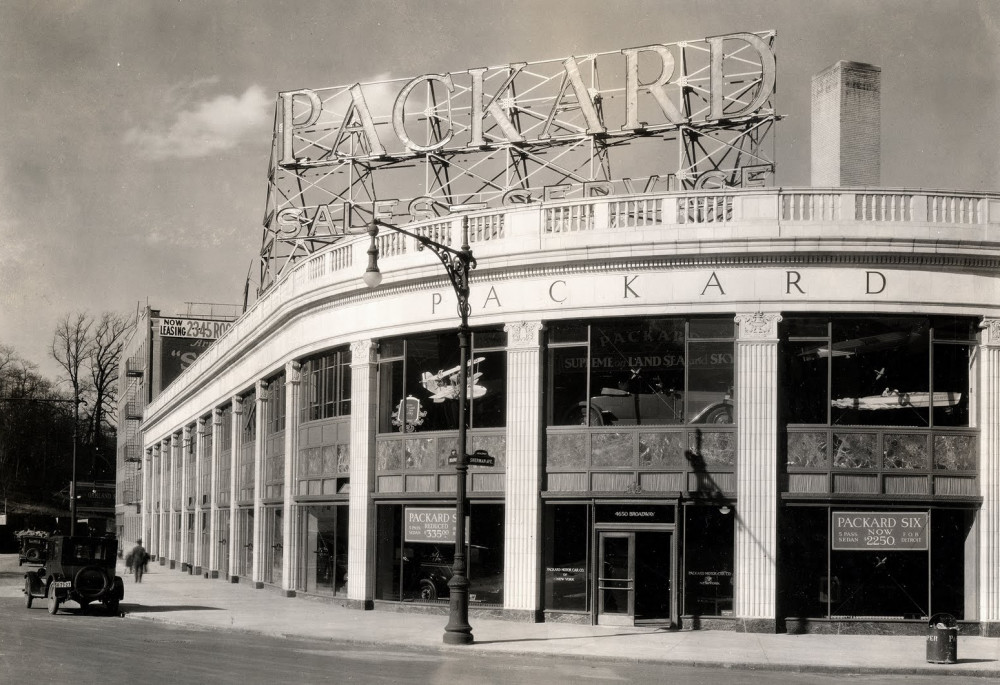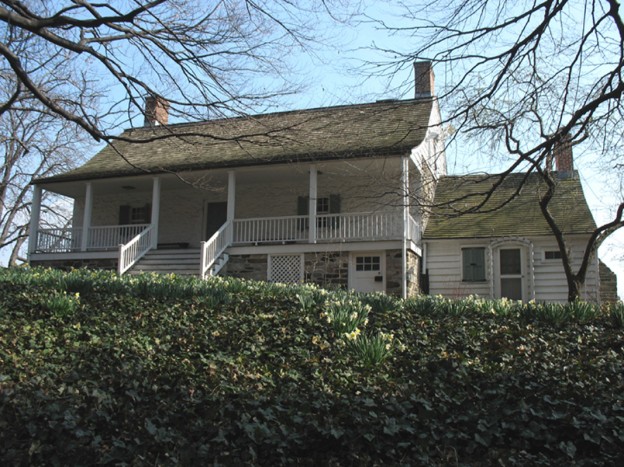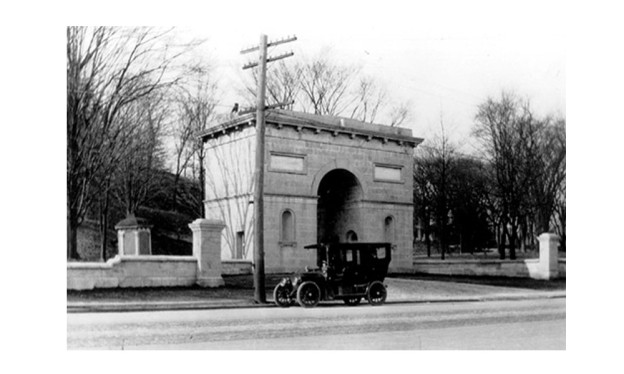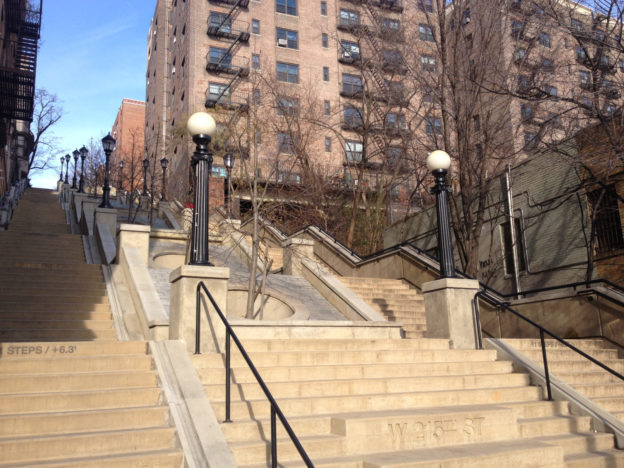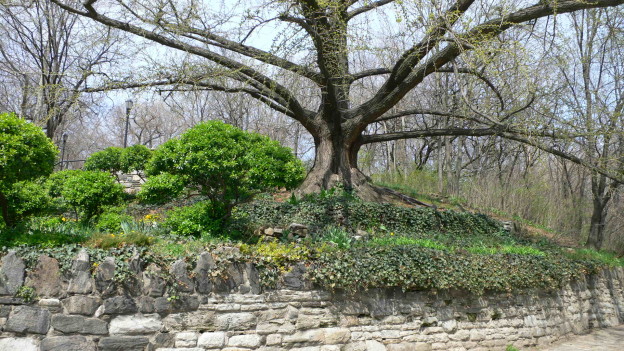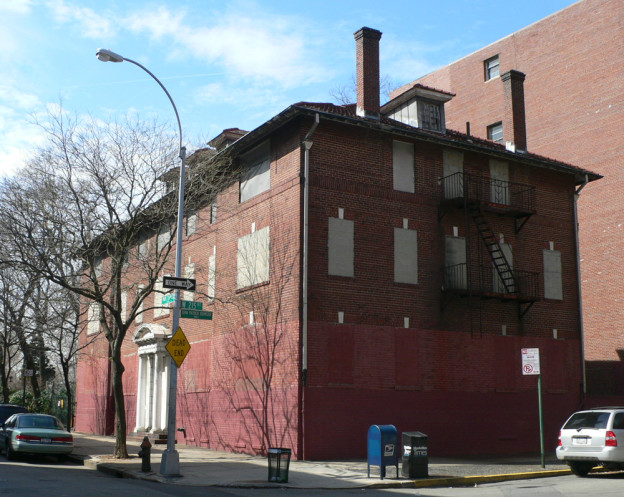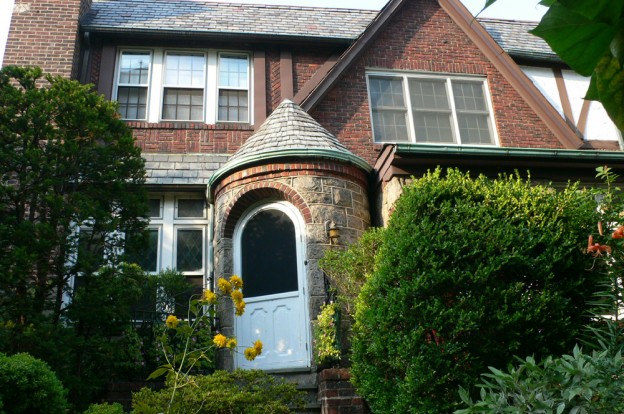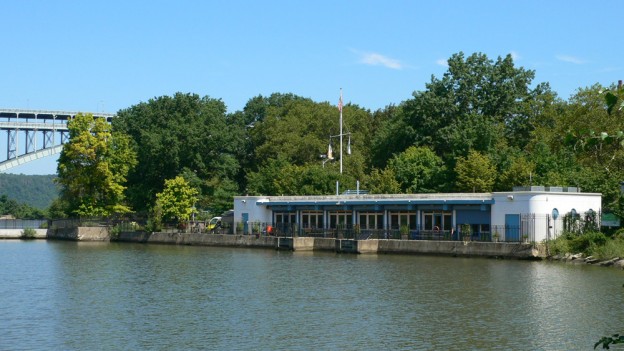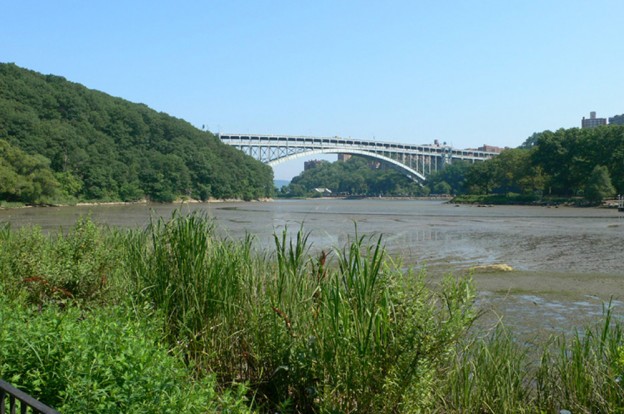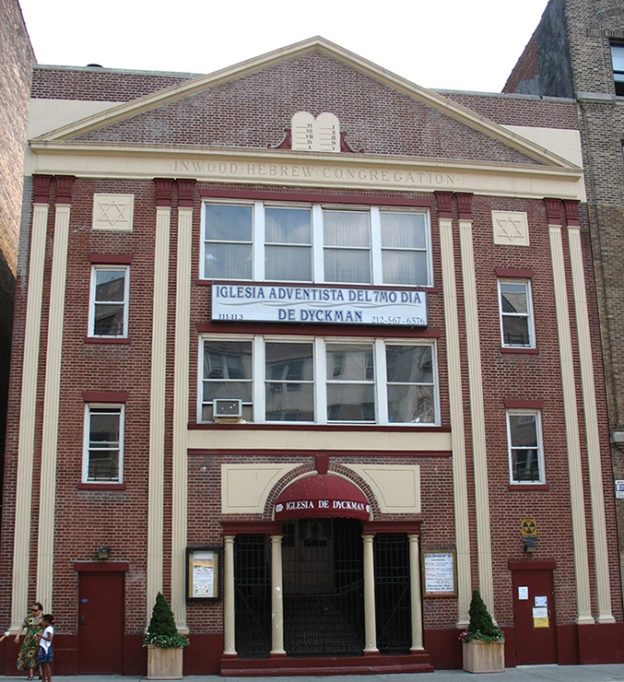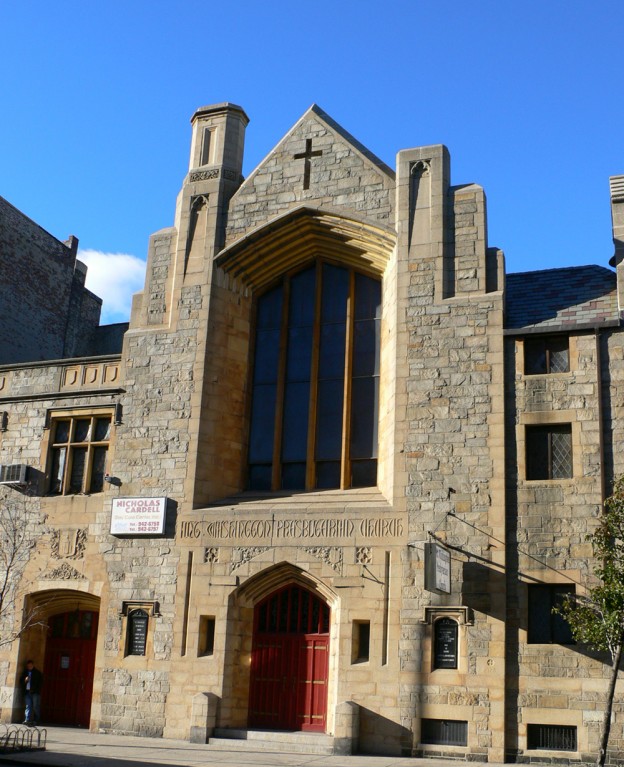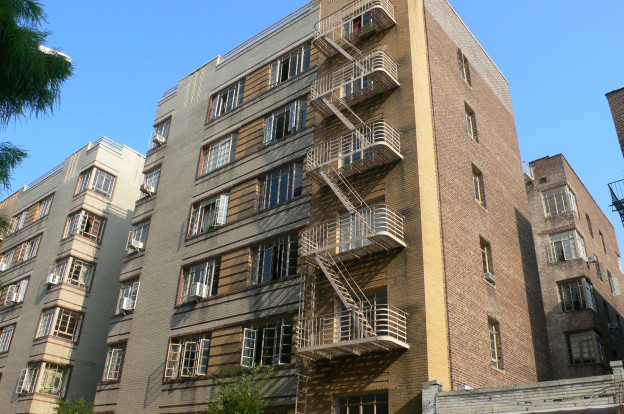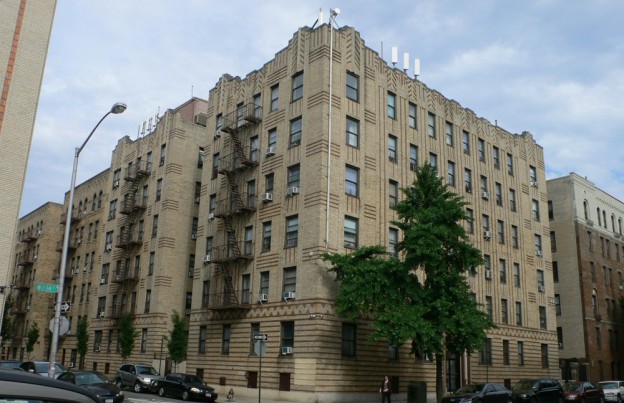Inwood is located at the top of Manhattan Island, at the point where the Hudson and Harlem Rivers meet a the Spuyten Duyvil. The area is historically, architecturally and environmentally unique as almost half of the land is public park space that preserves the natural terrain and geological features of the island, as opposed to the designed landscapes of many parks in New York City. In 1906, the extension of the IRT transit lines to Dyckman Street resulted in the rapid development of six- and seven-story apartment houses on land purchased from farms and private estates. Today, Inwood remains characterized by early-20th- century apartment residences built in relation to the preserved landscape of its public parks to the west and south. An industrial area, serving the transportation, sanitation and utility infrastructure of New York City, occupies a large portion of its eastern edge.
To learn more about Inwood click here
215th Street and 10th Avenue;
Heins & La Farge;
1908|
Historic photographs show that recent, still-in-progress renovations have been sensitive to the original, distinctive 1908 structure.
5063–5067 Broadway;
Unknown architect;
1855|
Once the imposing entrance to the Seaman-Drake estate, the arch, which is said to be a scale model of the Arc de Triomphe in Paris, is 35 feet tall and 20 feet deep and made of locally quarried Inwood marble. John Ferris Seaman bought 25 acres in Inwood in 1851 and created the estate and a mansion, also constructed of marble. The mansion was replaced in 1938 by the Park Terrace Gardens apartments.
West 215th Street between Broadway and Park Terrace East;
Ca. 1911|
The NYC Department of Design and Construction completed a restoration of the West 215th stepped streets in a form sensitive to its original historic design. Of approximately 100 original historic cast-iron lampposts in NYC that survive, two composite column cast-iron lampposts remain on this stepped street today and are designated New York City landmarks.
Dedicated September 28, 1912
ISHAM MEMORIAL,
ca. late 1930s
THE GINKGO TREE and
12 MILE MARKER
In 1911, land for the purpose of a public park was offered as a gift to the city by Julia Isham Taylor. Newspaper accounts reveal that Mrs. Taylor’s gift was intended to preserve green space and views from her father‘s land—a central, natural high point in the area. A bit later, Julia’s aunt Flora bought and added land to the gift “just to preserve the view” to the Hudson River. The gifts of land from the Isham family are detailed on a bronze plaque in the stone wall surrounding a circular paved terrace situated above Broadway between 214th and Isham Streets.
Samuel Isham, Julia’s brother, is quoted in the New York Times on March 24, 1912: “My father . . . re-graded the whole hill from top to bottom, planted nearly all of the trees that now remain . . . .” So the enormous gingko tree still seen at the Broadway entrance just above Isham Street, the former entrance to the estate, may have been planted by William Isham in the late 1860s.
When roadway workers were removing a red sandstone mile marker, William Isham had it installed at the right side of his entrance gate on Broadway. Part of the road system of the Old Albany Post Road, the stone indicated the 12 mile distance to City Hall in Downtown Manhattan and can still be seen today, although the text once engraved on it no longer exists.
530 West 215th Street;
James W. O’Connor;
1912|
This brick-and-terra-cotta mansion was constructed in 1912 for William Hurst, his wife and their 10 children. Hurst was the president of the Stock Quotation Telegraph Company, which supplied stock ticker equipment to financial firms. After Hurst died in 1929, his mansion was converted to a convent. In 1946 the property became the Garrard School of the Academy of the Sacred Heart of Mary which closed in 1969. In 1974 the Northeast Conference of Seventh-Day Adventists bought the house and continues to occupy the adjacent, more recent building as the Northeastern Academy.
On the south side of Hurst House in Isham Park is a community garden named for Bruce Reynolds (1960–2001), a Port Authority police officer who lost his life on September 11, 2001 at the World Trade Center.
(at the time known as PARK TERRACE NORTH);
Benjamin F.V. Dreisler, 1933;
C.G. de Neergaard, 1934|
This series of detached two-story residences are built in the Tudor Revival or Cotswold Cottage style, set back from lot lines with front and rear yards and either separate or basement garages. They reference the aesthetic of a small Garden City suburban enclave found nowhere else in Manhattan.
A. H. Zacharius;
1926|
These houses, constructed as two-family residences with accompanying two-car garages, are unique examples of the Arts and Crafts style, built when the styles of Art Deco and Modernism were becoming popular. They were constructed as multi-family detached dwellings when larger six-story apartment houses were predominant in the area.
Including bleachers attributed to Aymar Embury II, ca. 1936–40;
Skidmore, Owings & Merrill, 1946–48;
December 1936|
Moses-era Art Deco elements appear throughout the park and its natural landscape, including concrete entrance-gate columns, bollards, flagpole bases, water fountains and painted-steel bridge railings. Re-opened as the Inwood Hill Park Urban Ecology Center in 1995 (popularly known as “The Nature Center”), the largest Art Deco structure in Inwood Hill Park was originally designed to be a boathouse. Today it is used for lectures and exhibitions about the area’s natural history. Also constructed during the Moses era is the single-span, steel arch bridge named to commemorate the voyage of Henry Hudson on his ship the Half Moon, which anchored near the site in 1609. The bridge is part of the Henry Hudson Parkway, placarded as New York State Route 9A.
Adjacent to Isham Park, between Dyckman Street, the Hudson River and the Harlem River Ship Canal
Officially opened on May 8, 1926
Inwood Hill Park, created from lands purchased by the city in 1916, includes the largest remaining forest in Manhattan; its natural topography features schist, marble and limestone outcroppings with caves and the only remaining salt-water marsh along the edge of Manhattan Island. The park offers views of the estuary created by the confluence of the Hudson and Harlem Rivers at the Spuyten Duyvil, the Henry Hudson Memorial Bridge, and the Palisades on the New Jersey side of the Hudson River.
In 1992, then New York City Councilmember Stanley E. Michels sponsored successful legislation to name the natural areas of Inwood Hill Park “Shorakapkok” in honor of the Lenape who once resided in the area. The Native American name for the area means variously the wading place, the edge of the river, or the place between the ridges.
Intersection of Park Terrace West (PTW) with Cooper and Isham Streets|
At the intersection of Isham Street, which runs east-west, and Cooper Street to the south and PTW to the north are dramatic views of Inwood that can be viewed in four directions. Rock outcroppings are visible in Isham Park to the north along Isham Street between Seaman Avenue and PTW and again on PTW’s eastern hillside. The focal point of the view to the south is the Cloisters tower in Fort Tryon Park, framed between corridors of Art Deco residential buildings along Cooper Street. To the west one can view the entrance and hill of Inwood Hill Park. To the east the view is of the striking domed Gould Memorial Library and the Hall of Fame for Great Americans by Stanford White, a New York City individual landmark located on the bluff across the Harlem River at Bronx Community College.
608 Isham Street between Broadway and Seaman Avenue;
Completed in 1950|
The complex of this church was constructed on land that was purchased from the Isham family in 1912. The stone sanctuary designed by Paul Monaghan, which seats a thousand congregants, was completed on the corner of Broadway and Isham Streets in 1935, replacing a temporary wood-frame structure on Cooper Street. Romanesque in style, the church is constructed of granite with limestone trim and has a terra-cotta tile roof.
The 1914 rectory designed by Maynicke and Franke behind the sanctuary on Cooper at Isham is Gothic in style; it is constructed of Fordham gneiss, a local stone. A parochial school designed by Auguste L. Nöel in 1924 was later built west of Cooper Street at the corner of Isham Street and a masonry convent with stained glass windows designed by Paul C. Rilley was added at the corner of Isham Street and Seaman Avenue in 1950. The complex continues to serve the neighborhood‘s Catholic community today and is celebrating its 100th anniversary during 2011 and 2012.
111–113 Vermilyea Avenue;
George & Edward Blum;
1921|
This building is reflective of the once extensive Jewish population in Inwood. Both the Jewish and Irish populations of the neighborhood began to dwindle in the 1960s, as the neighborhood became increasingly Hispanic. Today the Seventh-Day Adventist church, the Iglesia Adventista del Septimo Dia de Dyckman, occupies the building.
80–4 Vermilyea Avenue;
Renwick, Aspinwall & Guard;
1928|
Mount Washington Presbyterian Church is the “new” building of the oldest congregation in Inwood, established in 1844 by Samuel Thomson. Led by the Rev. George Shipman Payson from 1874 to 1920, the church served early families of Inwood, including the Dyckmans, the Ishams and the Vermilyeas. The arrival of the Independent subway line forced relocation of the church from its former Dyckman Street address in the late 1920s. In 2005 the New York Landmarks Conservancy’s Upper Manhattan Historic Preservation Fund repaired the slate tile roof and copper drainage system of the church.
4881 Broadway at 204th Street;
Unknown architect, ca. 1784|
The Dyckman Farmhouse belonged to William Dyckman and his family, early prominent citizens of New York. It is the only surviving Dutch Colonial farmhouse in Manhattan. Between 1868 and 1871, the Dyckman family sold much of their large farm in four sections. Descendants of the Dyckman family bought the house and surrounding half acre of land, restored it with period furnishings in 1915, and donated it to the city the following year as a museum which continues to operate today.
Horace Ginsbern & Associates;
1937|
Adjacent to the Good Shepherd Rectory on Cooper Street is another striking Art Deco apartment building, notable for its original casement windows.
680 West 204th Street, 1935;
686 West 204th Street, 1931;
687 West 204th Street, 1935;
George G. Miller|
Inwood is not only the largest enclave of Art Deco apartment houses in Manhattan; it is also one of the largest Art Deco architecture concentrations in the United States. Uniformly five or six stories in height, these buildings comprise many of the streetwalls of the neighborhood and possess elements such as corner steel-casement windows, rounded-masonry corners, curved metal fire escapes, geometric parapets and simple but decorative brickwork, with lobbies that incorporate marble or other stone, handpainted murals, custom lighting and terrazzo floors.
207 and 209 Dyckman Street;
Harry T. Howell;
1906|
Inwood’s first apartment houses, the Solano and Monida mark the start of the housing boom in Inwood at the beginning of the 20th century, with their construction commencing in 1904. Developer Michael McCormick commissioned the buildings during a time when Inwood was remote and still anticipating the arrival of mass transit.
